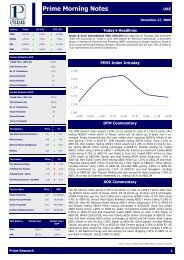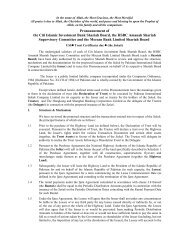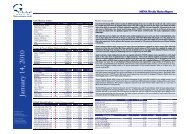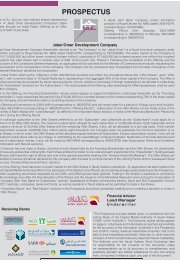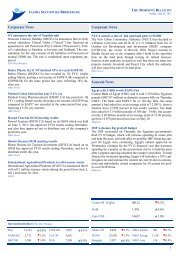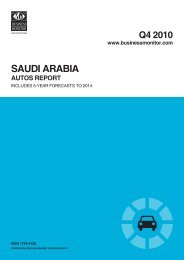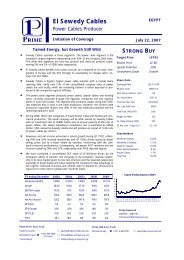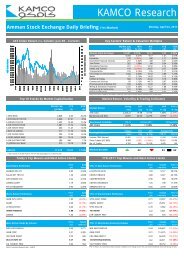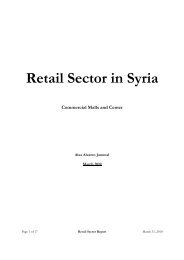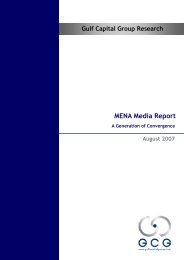Create successful ePaper yourself
Turn your PDF publications into a flip-book with our unique Google optimized e-Paper software.
16 Libya<br />
Current-account surplus<br />
narrows sharply<br />
The impact of the global economic downturn is fully reflected in data recently<br />
released by the Central Bank of Libya showing Libya's external position. With<br />
oil and gas exports constituting some 96.4% of total exports, Libya's trade<br />
surplus was severely dented in 2009, as both global demand and prices<br />
slumped. Total export revenue fell from a record LD76bn (US$59bn) in 2008 to<br />
LD47bn last year; a decline of 39%. Conversely, imports continued to grow.<br />
Since Libya's reintegration into the global community, its demand for foreign<br />
manufactured goods has grown unabated, as the access to global markets has<br />
exposed the country's shortcomings in terms of manufacturing output. It will<br />
take some years for Libya to develop a viable manufacturing base of its own;<br />
until that point, Libya's demand for imported goods will continue to rise. As a<br />
result of the shift in trade flows, Libya's trade surplus narrowed markedly,<br />
declining to LD19bn in 2009, down from LD49bn the previous year.<br />
Rising consumption and demand for foreign manufactures will also take its toll<br />
on Libya's non-merchandise account in the form of services debits. These are<br />
constituted chiefly of import-related services costs—such as insurance and<br />
freight—and so, as Libya's imports continue to rise, so will the ancillary services<br />
payments. Just as Libya's imports have risen by 75% over the past four years, so<br />
its services bill has almost doubled.<br />
Current account<br />
(LD m)<br />
2006 2007 2008 2009<br />
Exports 51,552 63,181 75,959 46,630<br />
Oil & gas 50,269 61,706 74,182 44,932<br />
Imports -15,674 -22,371 -26,807 -27,623<br />
Trade balance 35,878 40,810 49,152 19,007<br />
Services -2,751 -3,231 -4,672 -5,529<br />
Credits 145 247 273 824<br />
Debits -2,896 -3,478 -4,945 -6,352<br />
Income 1,506 1,838 1,938 1,120<br />
Credits 4,014 5,482 4,885 2,515<br />
Debits -2,508 -3,644 -2,947 -1,395<br />
Current transfers 435 -276 -1,285 -1,971<br />
Credits 1,603 686 -94 -264<br />
Debits -1,167 -962 -1,191 -1,707<br />
Non-merchandise balance -810 -1,669 -4,019 -6,379<br />
Current account balance 35,068 39,140 45,133 12,628<br />
Source: Central Bank of Libya.<br />
The effect of reduced oil export earnings is that oil companies operating in<br />
Libya post reduced profits and so repatriate fewer funds to their home<br />
countries. This is reflected in the income account, which shows a 52% fall in<br />
debits. Income credits, most probably representing interest accrued on Libyan<br />
assets overseas also showed a decline in 2009, as global interest rates fell as the<br />
credit crunch set in. Conversely, current transfers debits—made up mostly of<br />
remittances paid by immigrant workers back to their countries of origin—rose<br />
markedly as Libya's project development programme continued apace, and<br />
continued to attract increasing numbers of expatriate labourers.<br />
<strong>Country</strong> <strong>Report</strong> August 2010 www.eiu.com © The Economist Intelligence Unit Limited 2010




